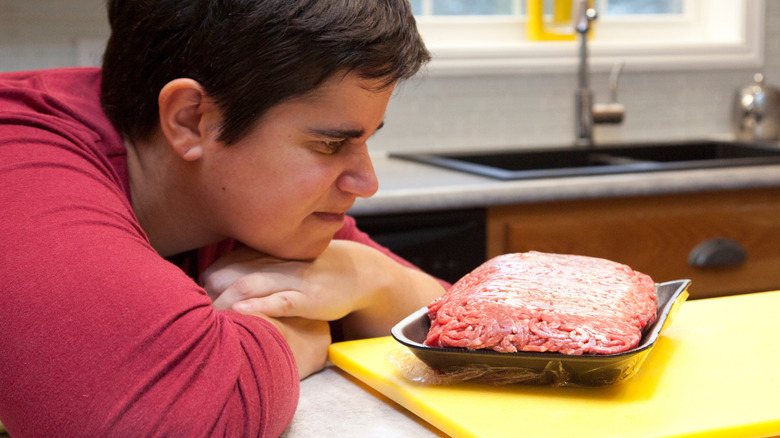
FabrikaSimf/Shutterstock
Glance over some of today’s most popular diets, and you’ll see that plenty are protein-heavy. And it’s not hard to see why: Protein supports numerous body functions, from building muscle and boosting fat burn to encouraging tissue repair. (Here are some health conditions that might benefit from a high-protein diet.)
Consumers can tap into the growing protein supplement industry to increase their protein intakes if they want. But some would rather go the more natural route and get their protein from foods rather than from a powder. After all, the protein in meat may be more bioavailable and functional than the protein in some plant-based foods and supplements, per a 2021 review in Nutrients.
Accordingly, you may regularly visit the beef section of your favorite grocery to ensure you always have meat-based protein on hand. Yet while beef is a popular protein choice, beef cuts can vary in their protein heft. In fact, a very popular type of beef that may be in your refrigerator or freezer, ground beef, is relatively lean on protein compared to other beef cuts — and, frequently, it’s also surprisingly abundant in fat.
A combination of cuts results in modest protein content

rustycanuck/Shutterstock
Ground beef doesn’t come from a single beef cut. Instead, it’s a mixture of beef from different parts of an animal. Packages of ground beef have a ratio of lean content to fat content on them and can’t legally contain more than 30% fat (via U.S. Department of Agriculture). This ratio can help serve as a guide for how much protein you can expect per serving.
For example, a 100-gram serving of 70/30 ground beef (that’s 70% lean meat and 30% fat) offers 14.4 grams of protein. However, if you opt for 100 grams of 80/20 ground beef instead, you’ll get 17.5 grams of protein. Although a difference of 3.1 grams of protein might not seem like much, it helps you get the amount of protein you really need every day.
That said, 17.5 grams is less than you’ll nab from other beef products. For instance, 100 grams of a beef tenderloin slab will yield 21.1 grams of protein; the same amount of top sirloin has 22 grams. Plus, conventional meat cuts offer less fat than ground beef products. Remember: A 100-gram 70/30 ground beef portion is 30% fat, meaning you’re getting 30 grams of fat along with your protein.
Beefing up the protein in meals made from an economical cut

Natalia Lebedinskaia/Getty Images
This doesn’t mean you have to remove hamburgers or meatballs from your menu. But it may make sense for you to buy the leanest ratio of ground beef you can find. As the numbers above illustrate, the lower the amount of fat in a ground beef product, the higher the overall protein content.
There’s just one snag remaining, which is price. Ground beef that has more protein (e.g., the kind with less fat) can be several dollars more expensive per pound, which may make it tougher on your wallet if you’re operating on a strict budget. And the price tag for ground beef is only getting steeper: According to beef market reports, the per-pound cost of ground beef has generally risen since 2022 with only a few dips.
Knowing all this, you may want to start investigating the protein in your favorite beef cuts before you get to the checkout lane. And if you decide to pick up some ground beef occasionally, consider augmenting it with relatively inexpensive high-protein foods like beans, plain yogurt, or cottage cheese. That way, you’ll be able to save a little money, enjoy your ground beef, and still get the protein impact you want.
Credit: healthdigest.com










